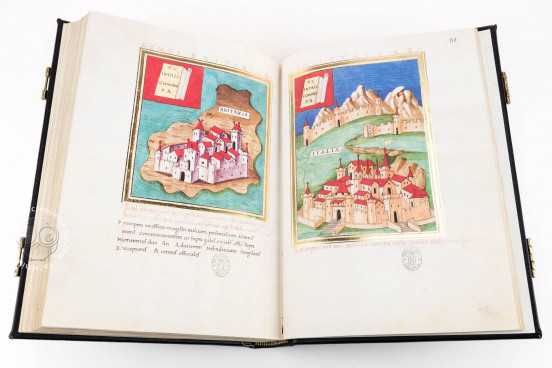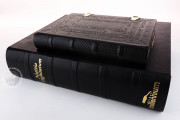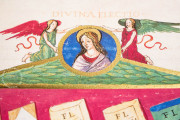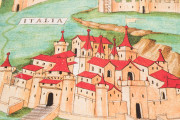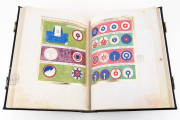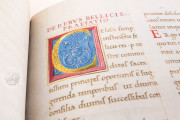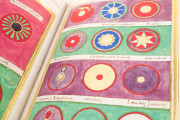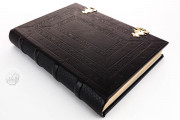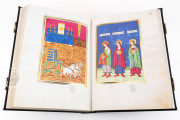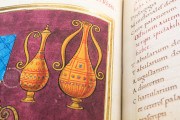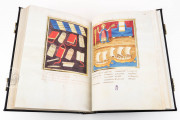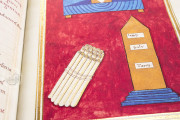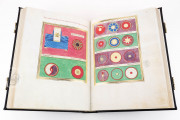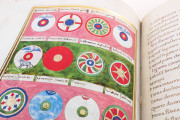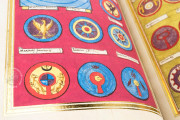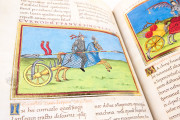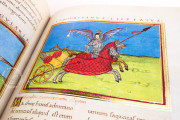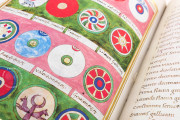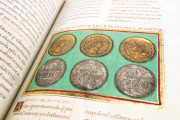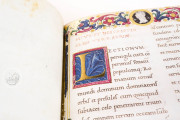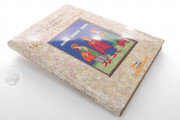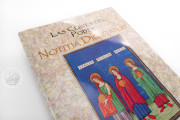The Madrid Notitia Dignitatum ("List of Offices") is a miscellany of geographical and political texts that includes a richly illuminated administrative manual listing the civil and military offices of the Roman Empire. It offers a rare glimpse into the structure of imperial governance, detailing hierarchies, insignia, and territorial divisions. It exemplifies the Renaissance humanists’ effort to recover and preserve Roman political knowledge and is notable for its ninety-eight paintings, which represent official regalia, military units, and emblems, all in vibrant colors and gold.
The Roman administrative system documented in the manuscript was strategically designed to maintain control over diverse territories spanning from Hispania to the eastern Mediterranean, unifying multiple cultures under imperial authority.
A Practical Model of Governance
The governance model presented in the codex proved remarkably effective as an instrument of imperial power. This practical efficiency explains the enduring interest this work has generated throughout various periods of Western history, serving as a blueprint for organized administration across extensive territories.
Medieval Revival under Carolingian Rule
When the original administrative structure had demonstrated its effectiveness until the decline of the Latin world in the 5th century, Charlemagne's attempt to establish a new Christian empire in the 9th century led to renewed interest in this text. The manuscript was subsequently copied and circulated as a valuable reference for imperial administration.
Concurrent with its rediscovery, other relevant writings were compiled from diverse sources to create a comprehensive compendium of useful knowledge, techniques, and procedures for exercising political power. These compilations served as practical handbooks for governance.
Manuscript Transmission and Visual Representation
This compilation process resulted in a miscellaneous manuscript that consolidated this administrative expertise. The compilers had access to beautifully illustrated ancient texts, which they meticulously copied, reproducing the images with remarkable accuracy. This careful preservation created an invaluable historical record.
Dual Significance: Pragmatism and Symbolism
Through these careful transmissions, the manuscript provides dual testimony: on one hand, it documents a pragmatic political framework based on rational administrative principles; on the other, it offers a visual representation of imperial authority through rich imagery laden with symbolic and propagandistic elements.
Renaissance Rediscovery and European Identity
It was natural that this cultural legacy would be rediscovered and reinterpreted by Italian humanists during the 15th century. In numerous attempts to create supranational political structures in Europe, scholars and statesmen have repeatedly drawn inspiration from these texts born of centuries of administrative experience, connecting modern governance to classical traditions.
Even today, as in the past, the concept of a united Europe extending to the eastern Mediterranean shores remains an ambitious political aspiration that continues to present significant challenges. The principles documented in the Notitia dignitatum thus maintain their relevance in contemporary discussions of transnational governance and administrative organization.
We have 1 facsimile edition of the manuscript "Madrid Notitia Dignitatum": Notitia Dignitatum facsimile edition, published by Millennium Liber, 2009
Request Info / Price
